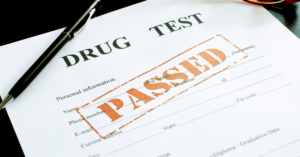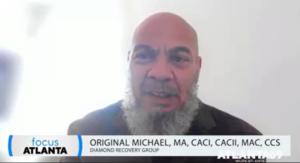What is Medication Assisted Treatment (MAT)?
Medication Assisted Treatment, or MAT is a treatment approach for substance use disorders that incorporates medications that support recovery. These medications are most often used to control cravings, but there are other benefits to MAT Medication Assisted Treatment as well.
MAT for opioid use disorders has grown in popularity in recent years, fueled in large part by the opioid epidemic in the United States, however, MAT is not a new idea. The notion of using medicine to help people recover from dependence on drugs or alcohol has been around for a long time.
The Dawn of MAT in Methadone Clinics
It’s fair to say the modern history of Medication Assisted Treatment began in the 1960s though. Methadone is a synthetic opioid invented in the 1940s, but facing a sharp rise in heroin addiction, American doctors and social workers were looking for solutions. Methadone, they surmised, could be used as a harm reduction measure for people with opioid addiction.
Several attributes made methadone an attractive option as a medication for opioid use disorder (MOUD). First, methadone is a long-acting opioid that avoids “peaks and valleys” in the amount of the drug in a person’s system seen in heroin and conventional opioids.
Methadone lacks much of the euphoric effects found in natural opioids like heroin and morphine (and semi-synthetic ones like oxycodone). This makes patients far less likely to misuse it, but it still acts upon opioid receptors to ward off cravings. With support from the federal government, methadone clinics began the first programs offering MAT for opioid addiction in the U.S.
Downsides to Methadone and the Old MAT Clinic Model
These clinics began prescribing methadone to heroin-dependent people in 1964. The results were quite positive compared to the other methods of opioid addiction treatment in use at the time. The initial success of methadone treatment affirmed that MAT for opioid addiction was an effective treatment that could save lives.
Methadone clinics had some downsides, however. Regulations required that patients visit the methadone clinic daily to receive their dose, for example. This limited MAT participation to people who lived close enough to the clinic and who had transportation. Some clinics would offer “take home” methadone to patients after a period of time, but patients still needed near a methadone clinic.
Another concern was that some methadone clinics began to attract drug dealers and people who were still actively using. Some patients would “cheek” their medication and sell or trade it outside the clinic. Others combined methadone with benzodiazepines, like Xanax, seeking a high similar to the heroin nod they were familiar with.
A New Hope: MAT Using Buprenorphine (Suboxone)
A different medication called buprenorphine first began to be discussed as a possible MAT solution for opioid use disorder as early as the mid-1970s. However, it wouldn’t be until 2002 that it was approved by the Food and Drug Administration (FDA) for use in MAT. Buprenorphine, better known by the brand name formulations, Suboxone and Subutex brought about nothing less than a paradigm shift in the field of Medication Assisted Treatment.
Like, methadone, buprenorphine also has a powerful affinity for the brain’s opioid receptors. These synthetic opioid molecules are especially “sticky”, meaning they remain attached to receptors much longer than conventional opioids. This accounts for its long duration of action, but it has another benefit.
Opioid receptors which are already occupied by methadone or buprenorphine cannot be activated by another opioid. Put simply, if a client who is prescribed a MOUD like Suboxone were to “slip up” and use heroin, for example, they will experience little to none of the euphoric effects from the heroin. Ideally, people in Medication Assisted Treatment programs for opioid addiction will have their cravings well-controlled and won’t pick up a drug in the first place, of course.
How Has Medication Assisted Treatment Evolved?
While MAT isn’t a new idea, these substance use disorder treatment programs are continually being refined. People sometimes focus on the “medication” in Medication Assisted Treatment rather than the word “treatment”. The fact is that medicine is only part of what MAT programs have to offer people with substance use disorders.
Modern MAT programs do much more than simply dispense medication. Outpatient counseling and therapy are provided to support clients in their recovery journey for example. The goal of MAT isn’t simply to keep every client reliant on a MOUD for the rest of their lives. Far from it.
Every person we treat in Diamond Recovery MAT programs has their own unique set of challenges. Everyone is at a different stage in their recovery timeline too. While there are clients who may remain in an MAT program for a longer period of time, the objective is to both reduce the risk of harm and to support clients in the critical early stages of recovery.
MAT is Effective, Evidence-Based Care for Addiction
MOUDs like Suboxone are highly effective tools for alleviating cravings and supporting recovery. However, they do not do the work of recovery for the client. They aren’t a substitute for the insight and transformation that comes from addiction therapy and participation in a program of recovery, such as the 12-step program.
That is why comprehensive Medication Assisted Treatment programs like those offered at Diamond Recovery facilities are designed to facilitate personal growth. A great MAT program educates the client about their substance use disorder but also helps them set and reach goals for themselves in recovery. That is what treatment for substance use disorders should do. Not simply treat symptoms, but give people the tools they need to grow and change and take ownership of their recovery for the long haul.
If you or someone you care about could benefit from MAT or another form of substance use disorder treatment, or you just have questions about Diamond Recovery and what we do, please give us a call at (844) 909-2525.





